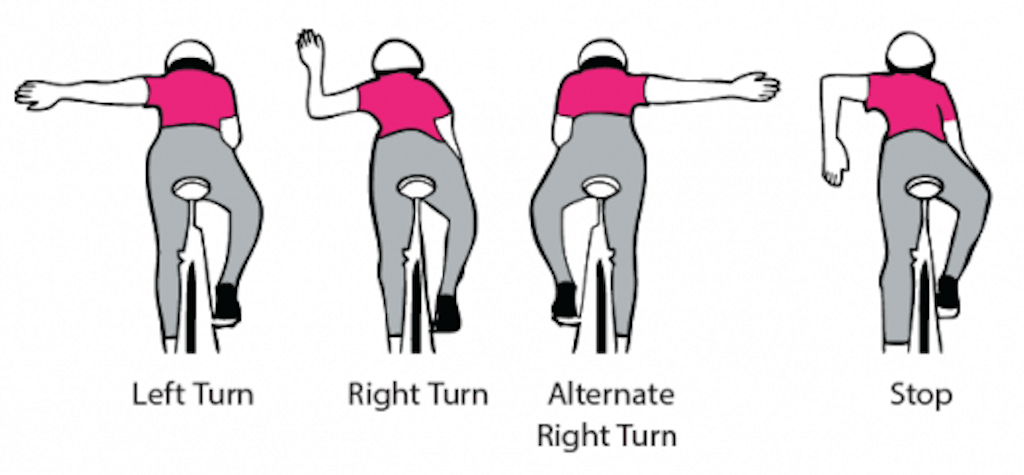Autumn Gear Guide
Find inspiration in our Gear Guide that will keep you out on your bike through wind or rain.
Download NowWhen you’re riding your bike on the road, it’s important to communicate with other drivers and cyclists to avoid accidents using hand signals. In this guide, we’ll show you the most common ones and how to use them properly. Why are bicycle hand signals important? Bicycle hand signals are important because they help communicate your […]
When you’re riding your bike on the road, it’s important to communicate with other drivers and cyclists to avoid accidents using hand signals. In this guide, we’ll show you the most common ones and how to use them properly.
Bicycle hand signals are important because they help communicate your intentions to other drivers and cyclists on the road. Without proper communication, accidents can happen. By using hand signals, you can let others know when you’re turning, stopping, or changing lanes, which can help prevent collisions and keep everyone safe. Additionally, using hand signals is required by law in many areas, so it’s important to know and use them properly.
There are three basic signals that every cyclist should know: left turn, right turn, and stop. To signal a left turn, extend your left arm straight out to the side. To signal a right turn, extend your left arm and bend it upward at a 90-degree angle, pointing your hand to the right. To signal a stop, extend your left arm downward at a 90-degree angle, with your palm facing backward. Remember to hold each signal for a few seconds to ensure that other drivers and cyclists have time to see and understand your intentions.

Hand signals are an essential part of cycling safety, but they can vary depending on the traffic situation. For example, when cycling in a group, it’s important to use them to communicate with other riders. You may need to signal to the group to slow down, speed up, or change direction. When cycling in traffic, it’s important to use hand signals to communicate with other drivers. Be sure to signal well in advance of any turns or stops to give drivers plenty of time to react. And always remember to make eye contact with drivers to ensure they see your signals.
When using hand signals while cycling, it’s important to make them clear and visible to other riders and drivers. Here are some tips to help you do just that:
1. Use your whole arm: When signaling, extend your arm fully and use your whole arm to make the signal clear and visible.
2. Make eye contact: Always make eye contact with drivers to ensure they see your signals. This is especially important when cycling in traffic.
3. Signal well in advance: Be sure to signal well in advance of any turns or stops to give drivers plenty of time to react.
4. Use the correct signal: Different signals are used for different situations, so make sure you’re using the correct signal for the situation you’re in.
5. Be confident: Finally, be confident when using them. Make them clear and deliberate, and don’t be afraid to repeat them if necessary.
Incorporating hand signals into your cycling routine is crucial for your safety and the safety of those around you. Practice using them regularly until they become second nature. Remember to use your whole arm, make eye contact, signal well in advance, use the correct signal, and be confident. By doing so, you’ll be able to communicate effectively with other riders and drivers, reducing the risk of accidents and ensuring a safer cycling experience for everyone.
For other bicycle tips and how-tos click here.
Lead photo: San Francisco Bicycle Coalition.
Find inspiration in our Gear Guide that will keep you out on your bike through wind or rain.
Download Now
Leave a comment